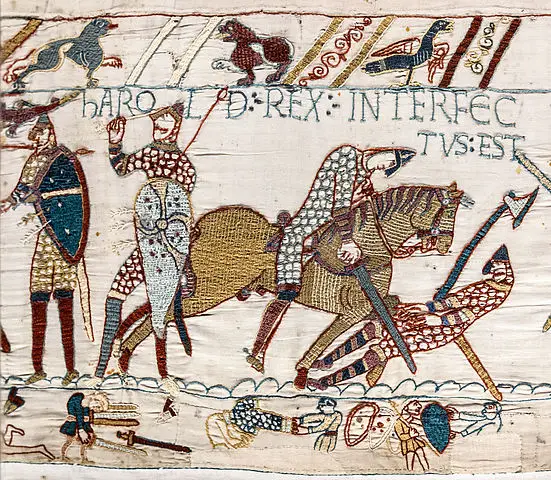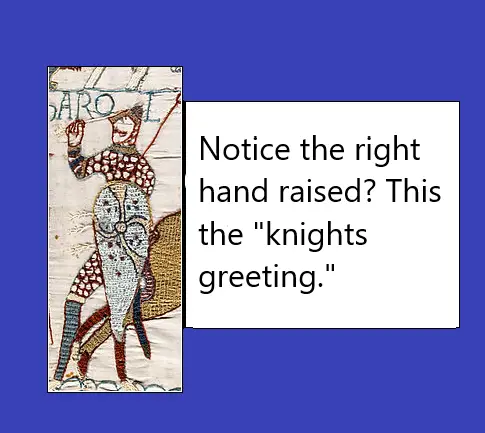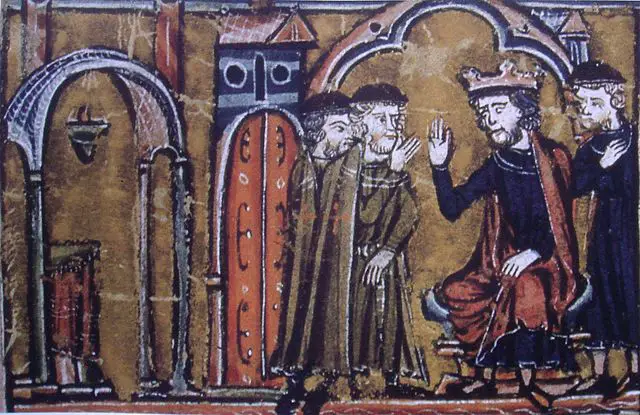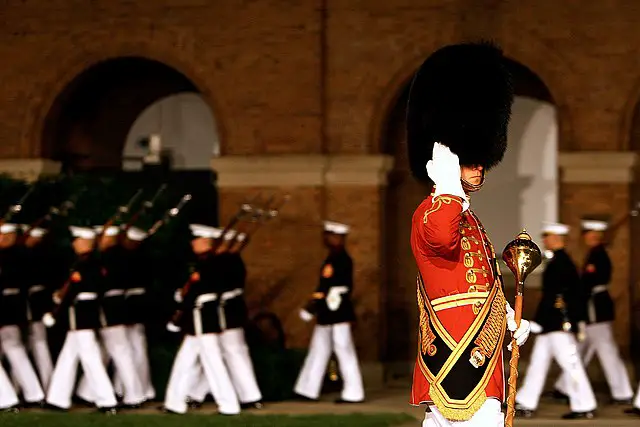
| Further Reading | The Top 5 Fun Facts About Medieval Knights |
Medieval knights were often clad in full armor and hard to distinguish from each other. Some medieval battles had well over 20,000 participants in them. How then did medieval knights greet each other so that they could figure out who was a friend or enemy? Well here is the answer.
Simply put, medieval knights would raise their right hand with the palm facing outwards. With this hand, they would raise the tip of their visor so that the other knight could see their face and identify them. This gesture served two purposes and today is where we get the modern military salute from.
It is important to remember that the medieval era was around 1,000 years long. Many traditions and greetings evolved in Europe during this time period. However, what follows is an article that provides a generalized answer to the question of how medieval knights greeted each other.
Here at The History Ace, I strive to publish the best history articles on the internet. If in the end, you enjoyed this article then consider subscribing to the free newsletter and sharing it around the web.
Without further ado, here is an answer to the question of how medieval knights would greet each other.
The Medieval Greeting Of Lifting Your Right Hand

The way that medieval knights would greet each other was by raising their right hand with the palm facing outwards. With this hand, they would then raise the visor of their helmet so that you could see who they were.
In the above image, we can see a knight with his right hand raised. He is greeting another knight during a battle to demonstrate that he is on their team. The image comes from an 11th-century tapestry demonstrating the defeat of Anglo-Saxon England by the Normans.
Knights would use this greeting in both battles and while out in the countryside. Depending upon the year the palm would have been used to lift a visor or simply to signal that the knight was friendly.
During the early medieval era, chances are this greeting was used to demonstrate that the knight was not armed. This was because from around 400-800 AD there were not many full-face helmets in circulation around Europe. The knights of this time period were not wearing full plate mail but rather were in a series of padded leather vests with some chain mail.
In the middle part of the medieval era, the greeting started to be used to lift the visor. This was because around the 10th and 11th centuries great helms started to be manufactured for knights. These are the typical knight helmets you think about that came with visors. As such the raised right hand would also at this point be used to lift the visor to expose the face.
In the late medieval era, the knight’s greeting would have changed to raising then hand and then taking off the helmet or lifting the visor. This is because from the 13th-15th centuries the armor of the average knight was getting so large and cumbersome that sometimes lifting the visor would have been impossible. Instead taking off the helmet was the better option.
Lifting the visor for a greeting would have been impossible on helmets such as the late great helm or the frog-mouth helm. Here the knight would have had to completely remove the helmet with their right hand to greet the other knight.
However, over the course of the late medieval era knights would greet each other by raising their right hand with the palm outstretched. During the middle and late medieval era, this hand would have also been used to either lift the visor or remove the helmet completely so that the knights could identify each other.
Why Would Medieval Knights Greet Each Other With Their Right Hand Instead Of The Left?

Why was the greeting always done with the right hand? Well, the answer comes down to the reason why knights would raise their hand in the first place.
The reason medieval knights would raise their right hand with the palm facing outwards was that it demonstrated they were unarmed and willing to talk. From an early age, medieval knights were taught to keep their arming sword on their left hip and fight with their right arm.
Most medieval knights fought with large weapons such as polearms, axes, and spears. This was because most of the team engagements happened at range. However, when an opponent got close the knight would take out their arming sword which was around 1-2 ft in length.
Since the medieval knights would be coming into close range with each other they would raise their right hand to demonstrate that they had not equipped their arming swords. This indicated to the other knight that they were friendly as they were willing to approach at close range to talk.
When the knights were mounted they also had their arming swords on the left side of their hips. Here the knight would also raise their right hand to demonstrate that they were friendly. Movies depict knights being able to draw their swords at a moment’s notice, this was often not the case. It took a couple of minutes, especially from horseback.
Therefore since all the knights were trained to fight with their arming sword in their right hand raising it demonstrated that they were friendly. If a knight raised their left hand it would mean nothing as they could always fight with their right hand.
That is why the knight’s greeting is demonstrated as raising their right hand with the palm facing outwards. The right hand was the fighting hand, by raising it the knight was demonstrating that they are friendly.
How The Medieval Knights’ Greeting Impacted The Modern Military Salute

The act of raising the right hand towards the brow of the head comes from the medieval era. Over time the knight’s greeting would turn into the modern military salute.
Nobody really knows the exact historical progression of the gesture. However, what can be inferred is that sometime during the renaissance and early modern era permanently standing militaries began to form along with nations.
Initially, soldiers in these fledging nations were armed with armor that resembled plate armor of the late medieval period. These heavy suits of armor were ill-suited for the evolving state of warfare in the modern era and were quickly phased out.
However, the helmet remained nearly unchanged during the early modern era. Helmets such as the lobster-tailed pot helmet still maintain widespread usage amount cavalry and officers. These helmets needed to have their visors lifted and as such the gesture of the knight’s greeting stuck.
Today we get our modern military salute from how medieval knights would greet each other.
Conclusion
There you have it; an entire article going over how medieval knights would easily greet each other.
Unlike other forms of medieval history, we actually have substantial primary sources in the form of tapestries and paintings that depict knights raising their right hand in greeting. Because of this, we can easily infer that knights would raise their right hand to easily greet each other during the medieval period.
Here at The History Ace, I strive to publish the best history articles on the internet. If you enjoyed this article then consider subscribing to the free newsletter and sharing it around the web.
Further, you can check out some of the other articles below.
-
How The American Revolution Changed The World

Here is how the American Revolution changed the world. Many people are not aware of just how important this event actually was.
-
Why The Roman People Loved Chariot Racing

Why did the Roman people love chariot racing? Well it all comes down to these 3 reasons.
-
The Design and Color of Roman Chariots

What was the design and color of Roman Chariots? Were they faster or slower then normal chariots? Well here is everything!
Sincerely,
Nick